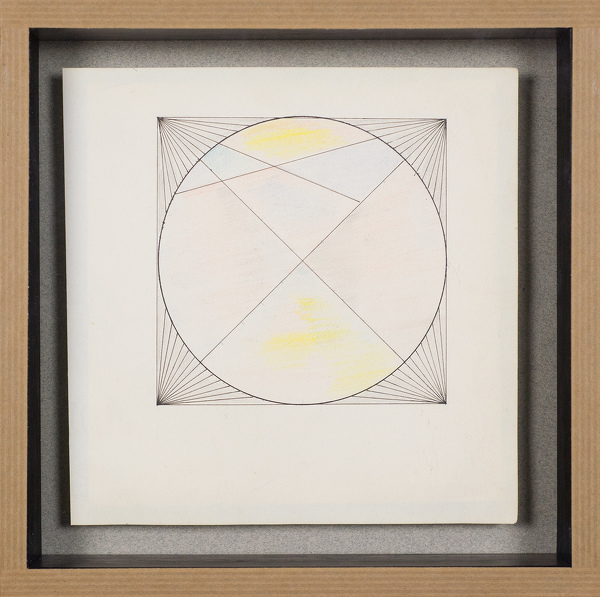
 SOLD
SOLD
Sir Thomas Monnington:
Geometric design, late 1960's
Framed (ref: 6517)
Pen and ink and colored crayon
6 3/4 x 6 1/4 in. (17.2 x 15.9 cm)
Tags: Sir Thomas Monnington crayon ink pen and ink Canney Abstract Art
This study most likely dates to Monnington's tenure as President of the Royal Academy - he was the first President to exhibit abstract paintings himself and encourage the British public to embrace abstract art.“Surely what matters is not whether a work is abstract or representative, but whether it has merit.If those who visit exhibitions would come without preconceptions, would apply to art the elementary standards they apply in other spheres, they might glimpse new horizons.They might ask themselves: is this work distinguished or is it commonplace? Fresh and original or uninspired, derivative and dull?Is it modest or pretentious?( Interview in The Christian Science Monitor 29.5.67).
When the Tate purchased Monnington’s Square Design (1967) he spoke of his abstract paintings as “direct descendants from my ceiling painting in the Council House, Bristol, which was my first departure from purely representational painting. Since them I have been increasingly interested in the subdivisions of surface areas contained in equilateral rectangles (squares) and rectangles derived from square roots. These two-dimensional mathematical relationships suggest to me dimensions in depth, and provide a discipline which at the present time I find as necessary and interesting as that imposed previously in representational painting... You can cut out the blurb if you wish, but I was trying for my own edification to put into words what I think I have been trying to do in the last ten years”, (letter of 12th June 1968)
Its circular form is similar in composition to the corner designs Monnington deviced for his Bristol Council House ceiling which explored the themes of mid-twentieth century scientific advancements: modern nuclear physics; electronics, which had enthralled him first in the shape of radio masts and later in radar equipment; aeronautics, whose laws he had begun to comprehend during the war; and biochemistry, where enlarged photographs of recent research revealed amazing quasi-abstract patterns.







